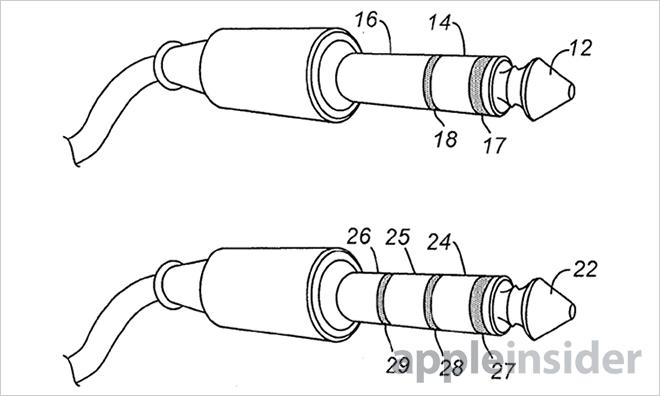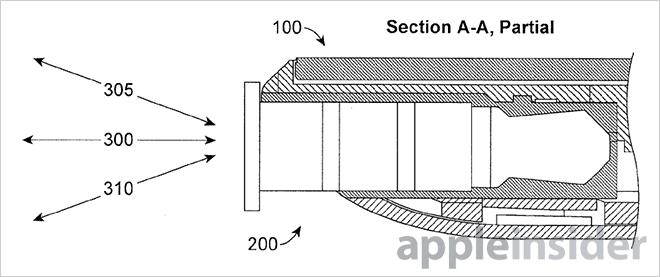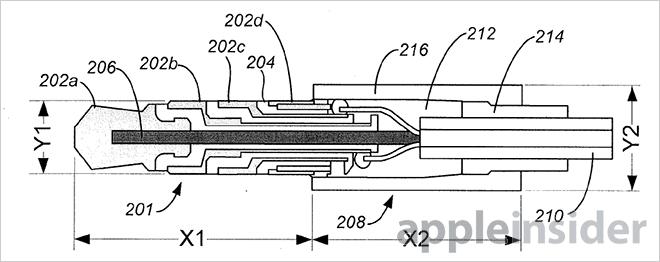Apple researching flexible headphone connectors to stop potential breakage
An Apple patent application published by the U.S. Patent and Trademark Office on Thursday describes an innovative headphone connector that uses flexible parts to protect against accidental breakage and costly equipment damage.
Apple's "Flexible TRS connector" patent filing outlines a number of designs and implementation scenarios for a headphone connector, the body or sleeve of which is partially made from flexible materials. By using flexible or elastic parts, the plug would be able to withstand moderate bending that would otherwise break existing connectors.
The design of headphones with 3.5mm connectors like those supplied with the iPhone, as seen above, is comprised of a conductive tip, conductive sleeve, and two conductive rings. Between the conductive areas is a dielectric material that isolate the audio, microphone and ground signals from corresponding pins in the headphone jack.
Signals are transmitted between the contacts to an inner conductive member that itself is connected to signal wires running through the headphone cord. At one terminus is the speaker or microphone, while the other end connects to the electronic device.
These TRRS (tip, ring, ring, sleeve) connectors can be brittle due to their construction, and are prone to breaking when inserted incorrectly with too much force, or extracted in a similar fashion.
Apple proposes a plug that incorporates flexible elastomers or thermoplastic elastomers that will give if a user accidentally bends the sleeve or the plastic shell that is located at the base of each connector. These materials can replace the dielectric insulation along the plug shaft or, in some embodiments, the internal member which runs through the entire sleeve can be made from an elastomer coated in conductive layer.
With the elastomer parts in place, the plug can withstand substantial bending when under strain and return to its normal state when strain is removed. In some cases, a combination of sleeve, inner conductive member, or shell is flexible, while other parts remain rigid.
Finally, in some embodiments, flexibility varies across the connector's length, allowing for more strain tolerance in areas prone to breakage, such as the tip or base of the plug.
With each iteration, the iPhone has become thinner as consumers demand sleeker, increasingly lightweight products. In Apple's latest iPhone 5, for example, the 3.5mm headphone jack assembly spans nearly the full width of the phone, almost to the point where the part is becoming a limiting factor in the device's design.
Apple's plans for the invention remain unclear, though the company could potentially deploy the technology as its devices quickly move toward a design stage that calls for thinner connectors, such as a 2.5mm subminiature plug.
Apple's flexible connector patent application was first filed for in 2013 and credits Albert J. Golko as its inventor.
 Mikey Campbell
Mikey Campbell













 Andrew Orr
Andrew Orr
 Malcolm Owen
Malcolm Owen

 William Gallagher
William Gallagher

 Mike Wuerthele
Mike Wuerthele
 Christine McKee
Christine McKee








